Maverick: The Apex Interviews Chris Bangle
If you've driven a consumer automobile in the last 20 years, or argued about the aesthetics of modern cars with friends, you've been engaging with the world of our guest this week, automotive designer Chris Bangle. Having started his career at Opel and Fiat, in 1992 Chris was named the first American chief of design at BMW. Over the next 17 years he went on to carve a legacy of distinctive, sculptural designs which set out a new paradigm for the premium car segment.
Today Chris is managing director of Chris Bangle Associates, a design studio in the Piemonte Region of Italy which turns its skills to everything from luxury yachts to drinks bottles, and earlier this year, Chris was awarded the 2021 American Prize for Design, recognising his immense contribution to transportation design. He spoke to us about his experiences at BMW, the pitfalls of modern car development and his radical suggestions for the future of transportation.
Hector Kociak interviews Chris Bangle for The Apex by Custodian. Recorded and Produced by Jeremy Hindle and Guillaume Campos. Transcribed by David Marcus. Edited by Hector Kociak & Charles Clegg.

What were your early car experiences, and what led you to become a car designer?
Well, that was a while ago! My father actually gave me a record once when I was about 5, I think. It was a vinyl of the sounds of the Watkins Glen Grand Prix. Basically you had this album of nothing but early ‘60s race cars going by, and some announcer saying, “...and Phil Hill here behind Stirling Moss coming around the corner…”, stuff like that. Somehow that combined with a slot car set really got me into this idea of cars. As a little kid you try to draw cars and things like that too; later I found out there was actually a school you could go to and learn that sort of stuff, but that took quite a while.
When did you make the decision to actually go to design school? Were there a number of things that you wanted to do or was it a case of wanting to design cars from the moment you knew what one was?
No, it wasn't like that at all. I like technical drawing - when I was younger I did a lot of calligraphy, because at the local church I was given the job of lettering the bibles when they gave them out for communion. When you arrive at a certain age you have your first communion and you get a bible, so I would put people's names in it with this kind of old Germanic script. I had a lot of fun doing that, and it got me into this whole idea of typography. I went to a high school that had a typography department in it too. I actually ran printing presses there. It was fantastic - nowadays, these presses are still in use. You see these ancient Heidelbergs and when you talk to people about them, they're amazed that this American actually has experience on these things...
Anyway, this high school was a very good one in Warsaw, Wisconsin, for these sorts of practical experiences. They got me into draughting and understanding technical drawings, and gave me a summer job when I was about 17 as a technical draughtsman. At that time I thought I would go into the priesthood and become a minister, and I went to a local version of our state college. It was very good, but at that time I also discovered that the ArtCenter College of Design existed, which I didn't know anything about, and that they could teach me how to paint the box covers on model boxes. That's what I thought was the ultimate - you could paint those pictures of battleships and airplanes and cars. I had no vision beyond that.
Once I got to ArtCenter, I did a portfolio with just car drawings. They accepted me, amazingly enough. Then I discovered that there are people who really take cars seriously and are very knowledgeable, and I had roommates who were really good at teaching me all about the greats of car design that I knew nothing about. It was a lot of fun.
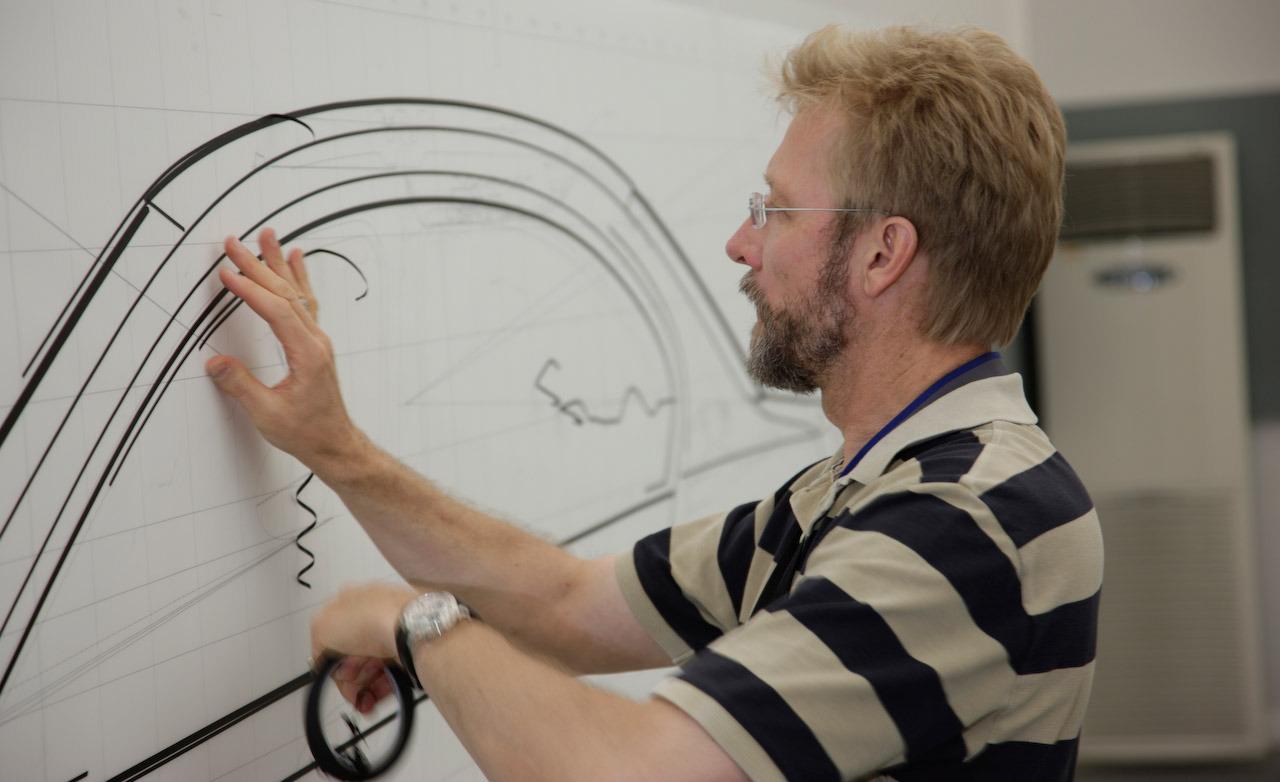

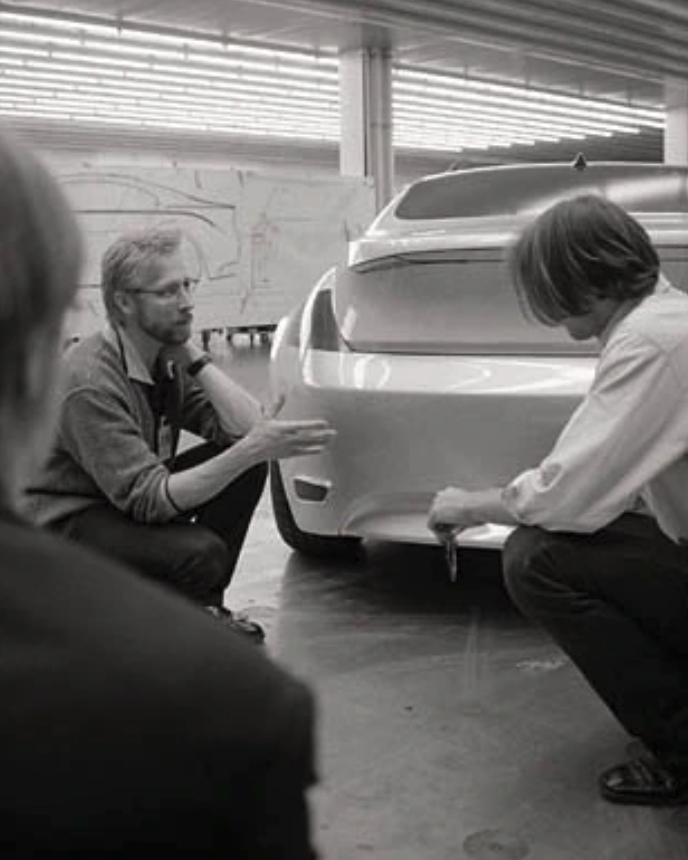
Previously Chief of Design at BMW until 2009. Source: Chris Bangle Associates
That leads me to my next question: which designers have had the greatest influence on you, and what did you like about them? I was going to ask whether you used to idolise people like Marcello Gandini or Bertone, or maybe people further afield from architecture or other technical disciplines.
Well it's a super long list, so I doubt I could do anything other than make mistakes by leaving somebody out! You know the greats like Gandini and Giugiaro, they go beyond mention; they are names that I have always referenced. I've had the pleasure of meeting both gentlemen and they're really fantastic people too. Syd Mead, who passed away a little over a year ago, was to me one of the really great influences in my life, once I got to know about him at ArtCenter and got to know him personally as well. To see a futurist at work as a car designer was a wonderful thing. It let me know that there's a concept of the future out there that is different from the concept of ‘same as yesterday with a different curve on it’. This is, I think, an important thing for me.
If you go into the fields of architecture and things like that, I'm very influenced by the writings of Robert Venturi and his kind. I don't know, I couldn't even put the list down now, I'm really not good at remembering names! I would mention however Sir Kenneth Clark, who wrote the book The Nude - that one book has probably influenced me more in car design than any other book. It has nothing to do with cars, but if you take the word ‘nude’ out of it (because it's all about the nude as an artistic and sculptural theme), and you put the word ‘car’ in, the entire book is dead on.
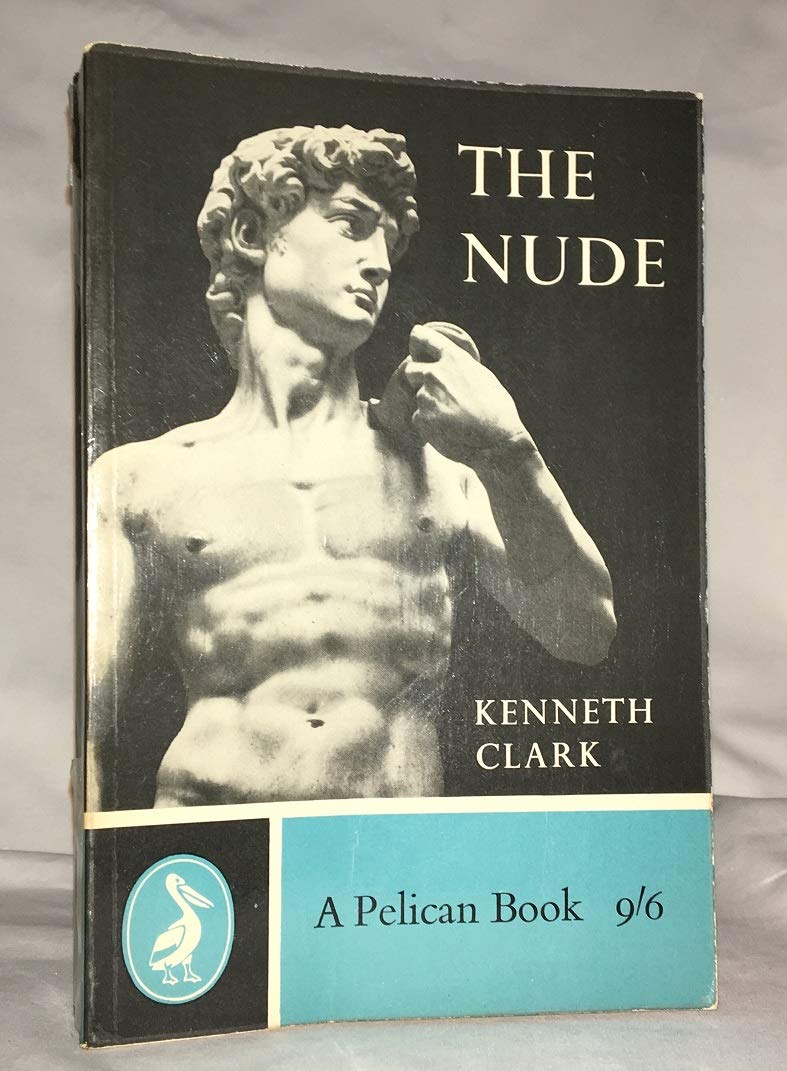
Moving on to your career - after some time at Opel and Fiat, you were appointed head of design at BMW in 1992, and you stayed there for the best part of two decades. What were the highlights of your time there, and what were your greatest challenges?
The greatest challenge is coming into something which is a car design culture and understanding that it's not a static thing. It has to evolve, and you play a role in that, but the people there are what makes it happen. I would say that the greatest challenge was to try to understand how that entire mechanism should work, and can work, and help it achieve things that it previously didn't think was possible, and at the same time keep the people engaged and make them feel like they too are achieving things they didn't think were possible. And every once in a while, surprising everybody with what comes out in a manner which you're proud of and it helps the company.
That isn't a very easy way to do it, and there were certainly a number of points where we thought, holy cow, we're really pushing a lot of water uphill here! But it paid off, and I'm very happy about it. When I got there, the team had been over two years without a design director - that's a long time without a particular type of leader in that particular role. On many occasions I have talked to people about flat hierarchies and the way management structures could work and should work; you realise that there are roles for leadership which, in a creative world in any case, are very important for giving focus to a team, as opposed to direction. That's something that I had to learn and fit into during my time there.
I also had an extremely mixed background. I didn't come from the world of the car fanatic. The thing is, my first love is car design, not necessarily cars. At one point I remember some guy asking me how I got the job - you know, you don't have 10 million model cars on your walls, you're not rebuilding a Ferrari in your garage, what the hell? I can remember telling him that there's moments when you want someone who is seriously dedicated to the minutiae of what the car is and its historical consequences. Sometimes you really need the guys who have the model cars on their shelves, and can recite every Ferrari that's ever been made, and have that intimate knowledge and connection to the history of car design. People like Joji Nagashima, who I think is still at BMW. In my day, if you asked Joji to sketch the entire history of the automobile, he would do that on a piece of paper for you.
But you also need people who can stand above that, and look at it all from a macro perspective, and see a different type of phenomenon at work. I think that was my role at BMW - to be able to do that, and my particular background probably helped me in that.
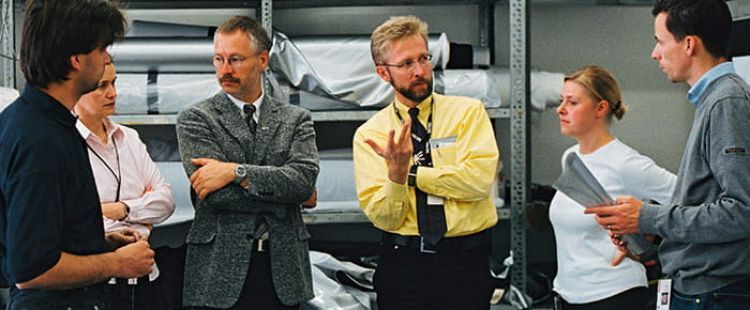
There seems to be a need for balance. It’s like putting a purely ‘car’ person in charge of a company making consumer automobiles for customers not all of whom are actually car people.
This is one of my critiques about car design education. It's car guys teaching car guys how to be exactly like they were, and to me it’s very difficult to move a culture forward doing that. It's something that I've written about, and something that I've talked about with students as well. I think you need a different kind of mindset in this whole thing to drive it forward, which could explain why it's not really driving forward right now.
What is your take on the state of car design language today? I'm asking that question from a perspective of explaining why, for example, Lexus front grilles are now becoming so enormous that they are taking over the entire car, or BMW’s latest controversial design revamp. How does that sort of thing come into production and why?
You know, when an artistic culture feels like it's done everything, then it just regurgitates itself. This happened in the arts and in architecture with mannerism in the late Renaissance - which was basically this idea that Michaelangelo had done everything: he was so huge, he was a giant of art, he was a giant of architecture, he could paint, he could sculpt, he could design buildings. In the wake of this one guy, the whole artistic workforce suddenly decided okay, it doesn't get any better than that, and all we could do is just take what he did and skew it. So you wind up with all these bizarre distortions and permutations on architecture and art. We're talking about paintings like Parmigianino’s Madonna with the Long Neck, and we're talking about architectural buildings where they're basically an inside joke, because it's architecture for architects making a joke about architecture, which is kind of car design today. It's car designers making a joke about car design just for car designers, and it's not moving this thing forward. It's manneristically treading water.

Is this where you get more and more complex folds, curves, CAD-designed lines where no one would really notice their absence, strange exhaust ports, little bits of chrome trim that you don't really understand the need for? Or is it a more fundamental difficulty that people have in moving away from certain kinds of paradigms?
It’s both of these actually. You did a pretty good analysis of it right there, thank you - I don't think I could say it better than that! It all starts with this trope that is trotted out at every occasion, that we don't want to scare the customers. You put that on one end of the playing field, and on the other you say, oh, but it has to be aerodynamic and makeable by suppliers, who can only make what they've made before, blah blah blah. They’re real form-follows-process arguments. Those two things form this sort of cage around the concept, then within that, the car designers have their own cages in their own minds, because they don't want to scare themselves. I mean have you ever seen anybody draw something that scares themselves? It just doesn't happen.
It becomes this continuous loop of the car being exactly as before, but now (as you said) you add a little more chrome slop here, and stretch some of the graphics there beyond whatever the good Lord intended them to be. Many people also don't realise that things like giant grilles are actually masking a whole set of fundamental functional problems, as car designers have to wrestle with sensors and the cameras and detector systems and all kinds of crap which wants to be exactly in the middle of the car for the best picture. They just don't know how to deal with this stuff. So what do they do? They just make the grilles bigger and bigger.
It's quite funny in the case of suppliers as well. You see the blurb in the leaflets at trade shows about radical engineering pushing the limits of design, but it sounds like on some of these projects the answer is ‘radical design - but not today!’
Yes, that's a bunch of crap. As is well-known, form followers suppliers. If they don't do it, it doesn't get done, and what do they say? Well nobody asked us to do it, so we don't!
That must be a struggle for a chief designer who is responsible for setting the yardsticks of a particular model line for the future. It sounds like there's a lot of practical steps that you need to overcome?
Yes, but most importantly, you have to have a kind of mindset for this. There is a concept called Grundlogik which is essentially ‘basic logic’. It refers to what is unsaid, which is taken for granted in something to the point where you don't even acknowledge it, and it forms a background to whatever task you're dealing with. This works in any field, and car design has got a Grundlogik behind it which predefines things in our minds. It’s the muscle memory that designers carry with them, they will always draw a car in the same way, and it winds up giving us all the same starting points. When we had to do REDS, a rather radical and unusual car, one of the Grundlogik ideas that we challenged was: does it have to be a holistic object? Meaning can you see it in one shot, grasp it in its entirety and understand it? We said no - what happens if it isn't that? What happens if you cannot understand it at first glance? We present it to you in layers, and every layer has a different story. That's something which car design had basically never done before.
With the growth of social media and 24/7 PR, do you think it's actually more difficult these days to be a really radical designer at a large car manufacturer?
The social media thing is actually pushing car companies into a concept called “Designed for Instagram”, where they have to make their stuff look really peppy and sharp so that it gets that instantaneous appeal and gets forwarded to somebody else. However after that it doesn't really hook into anything, which explains the banality of all the supercars out there. They are trying to fit into the exact same visual mould, which itself is basically defined by shared visual mediums like that. On the other hand, that's not what I think is really holding back car designers. The current challenge within the big companies is to understand the role of progression of car design in their future success. They don't understand that, and so they don't think it's worthwhile. If somebody else does it, fine. Once it's been established they can latch onto it and copy it, but they don't understand that it's in their interests to invest in that, which is why this concept of design research is so banal.
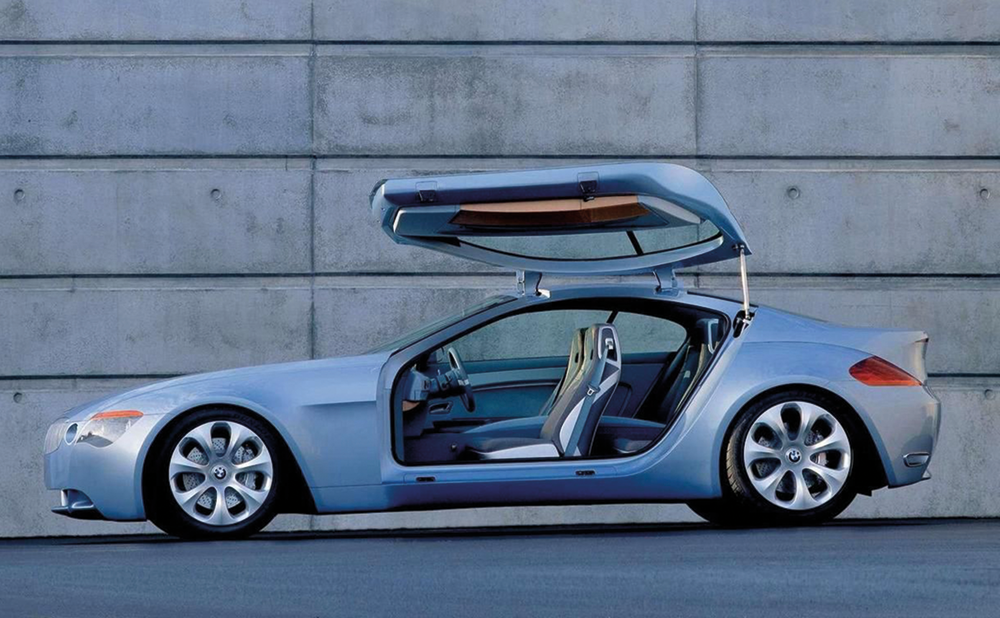
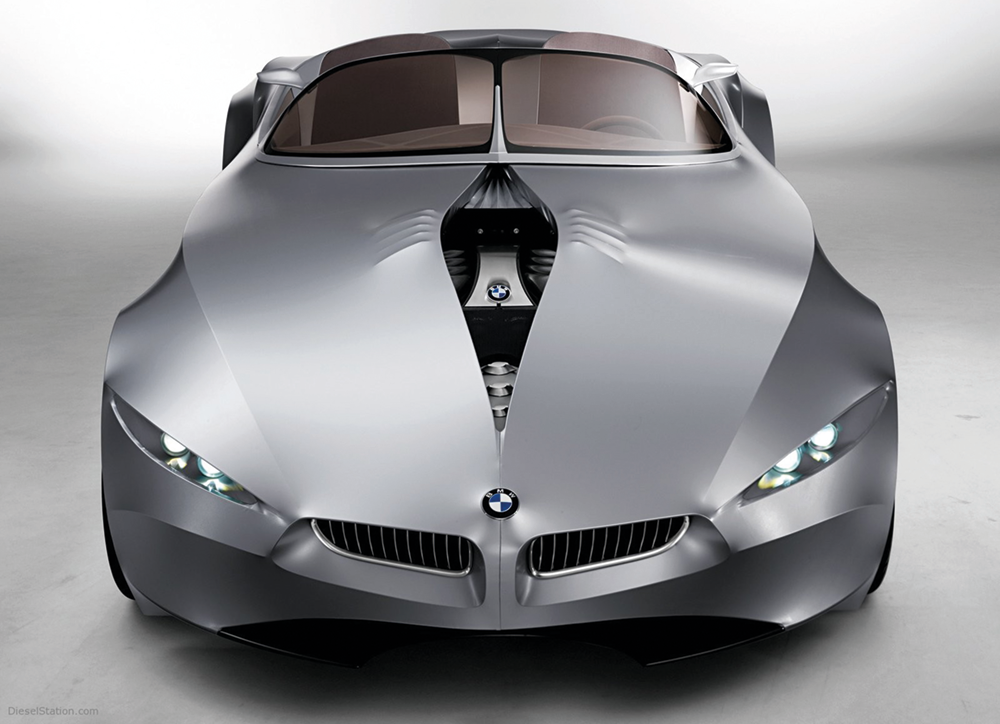

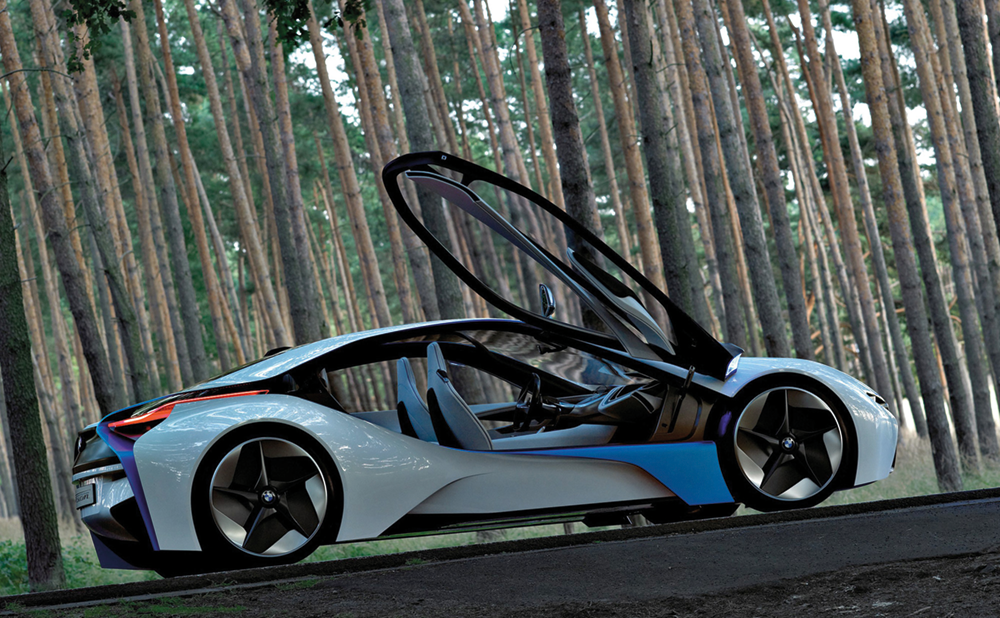
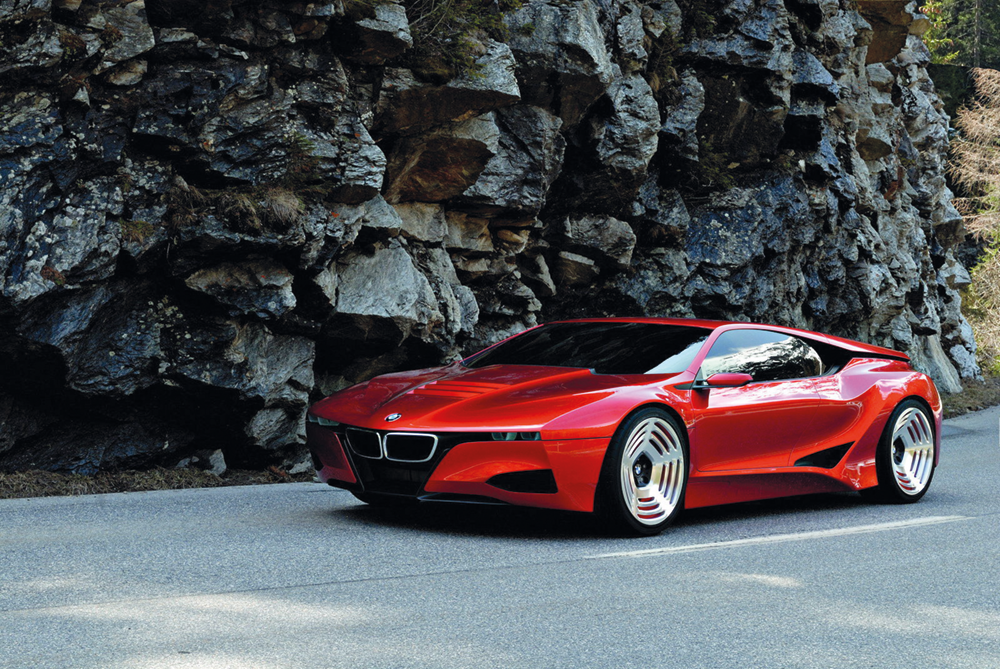
Designs and concepts created by Chris throughout the years. Source: Chris Bangle
A more philosophical question I had - we've got new powertrain technologies coming out, and at the same time, the car is a powerful cultural construct. Everyone knows or thinks they know what a car is and should be. Do you think modern car design needs to change radically and fundamentally in order to make the best use of new technology?
Well I wouldn't actually start with the technology. I would start with the real world of real people and what they do, how they would like their world to be, and work backwards from there. I'll just give you an example. One of the Grundlogiks of car design is that we design cars to go from A to B. But is that true? In a world where you're calling up an Uber or a Lyft or something like that, is the car's design important for you going from A to B, or could it be the decisive factor at A and at B? For instance the transition from being outside the car to being inside makes the difference between whether I pick, let's say, an Uber or a Lyft. Why? Because Lyft, for example, gives me the red carpet treatment getting in and out of a car. That means that when I arrive and when I depart, I look like a superstar.
This is something that at BMW we learned from our experience with Harley Davidson when we were doing the R18 Cruiser motorcycle. It took forever for us to get our heads around the idea that the difference between a BMW and a Harley Davidson motorcycle is that a BMW motorcycle is about getting from A to B, because it's the world's best bike for the curves etc., but the Harley is all about arriving and all about departing, and that's when people really make a show of the vehicles. So is that something that these technologies can help us do in a different manner because they allow us to rearrange things? I mean, if we start from that point of view, then we see where the technologies drop into place, and it might be a way to give us a different approach.
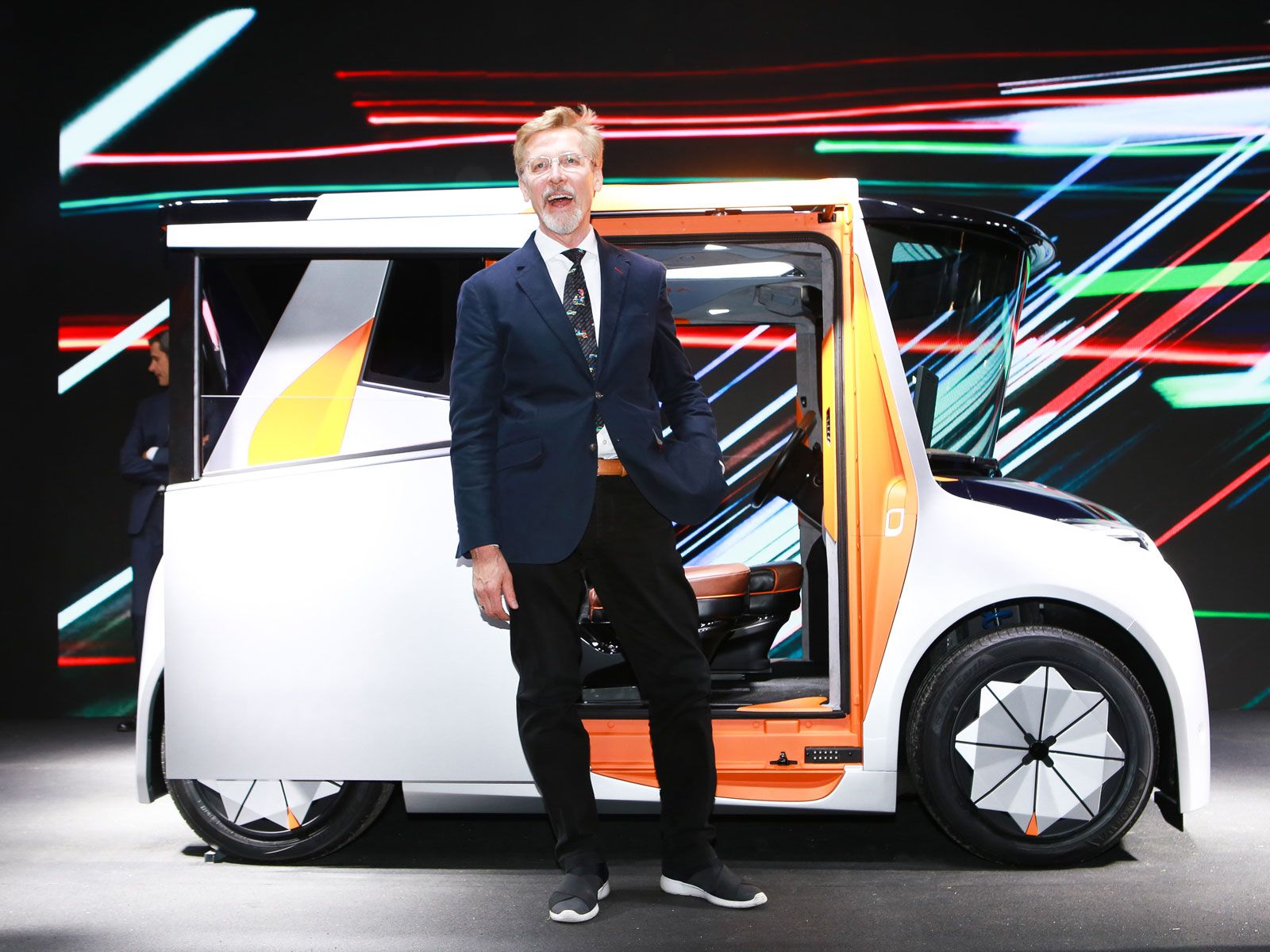
Is that where your REDS project comes in? Could you tell us a bit more about it?
Yes, it's still an ongoing project. They are still dedicated to making it. China got isolated in the last year and a half from us - I haven't been over there for a while - but the concept behind REDS was to put together two things: a very ecological EV that they wanted to have as a platform, and the particular urban mobility needs of the megacity of China, which is a lot about cars not moving. So we took this as the basis: statistically 90% of the time the car is not moving, and we made that the special selling point. We still make a car you can drive, so the prototype we made has got over 1,000 km on it and it drives fantastically, but it's when it's not moving, it does things that no car can do. You can flip the seat around and talk to people in the back seat without opening the doors, stuff like that. It turns out that for people in these megacity environments, there's lots of times when they need that space for themselves. It's called the ‘fourth space’; it's not home or work or a Starbucks, but it's your personal space.
When we designed the car around the space, using the volumes that are required on the inside, it turned out to have this really weird spaceship shape. When we looked at it we said okay, if we keep it like that, it's just going to be a weird spaceship car. How can we sandwich this car within a car? When you first look at it, it looks like a normal car, with a sense of adorableness about it which leads you into it. Then you look and realise there's something else going on here. To make a long story short, we split the car on the Y-axis, which has almost never been done before.
By that I mean: with XYZ coordinates in car design, the X axis is the length of the car, the Z is are the height of the car, and the Y is the width. When you think of a two-box or three-box car, this is because you split the car on the Z axis in different manners. There’s a platform, and then you make a block that sits on top of it. A Model T Ford is split on the X-axis. Everything from the firewall forward looks entirely different from the firewall back. No car had ever been split on the width axis, where the sides are completely different from the part in the middle. The A pillars on the side slope normally, but the front windshield actually slopes in reverse to allow the steering wheel to get out of the way so you can flip the seat around. This type of split on the car is a different type of design approach which I think helped us get around this immediate rejection of the car as too much of a spaceship, and at least get it over this first hurdle of: is it a car or not? When people see it, yes it looks like a car, but it's a car a little kid would draw, which is cute and approachable.

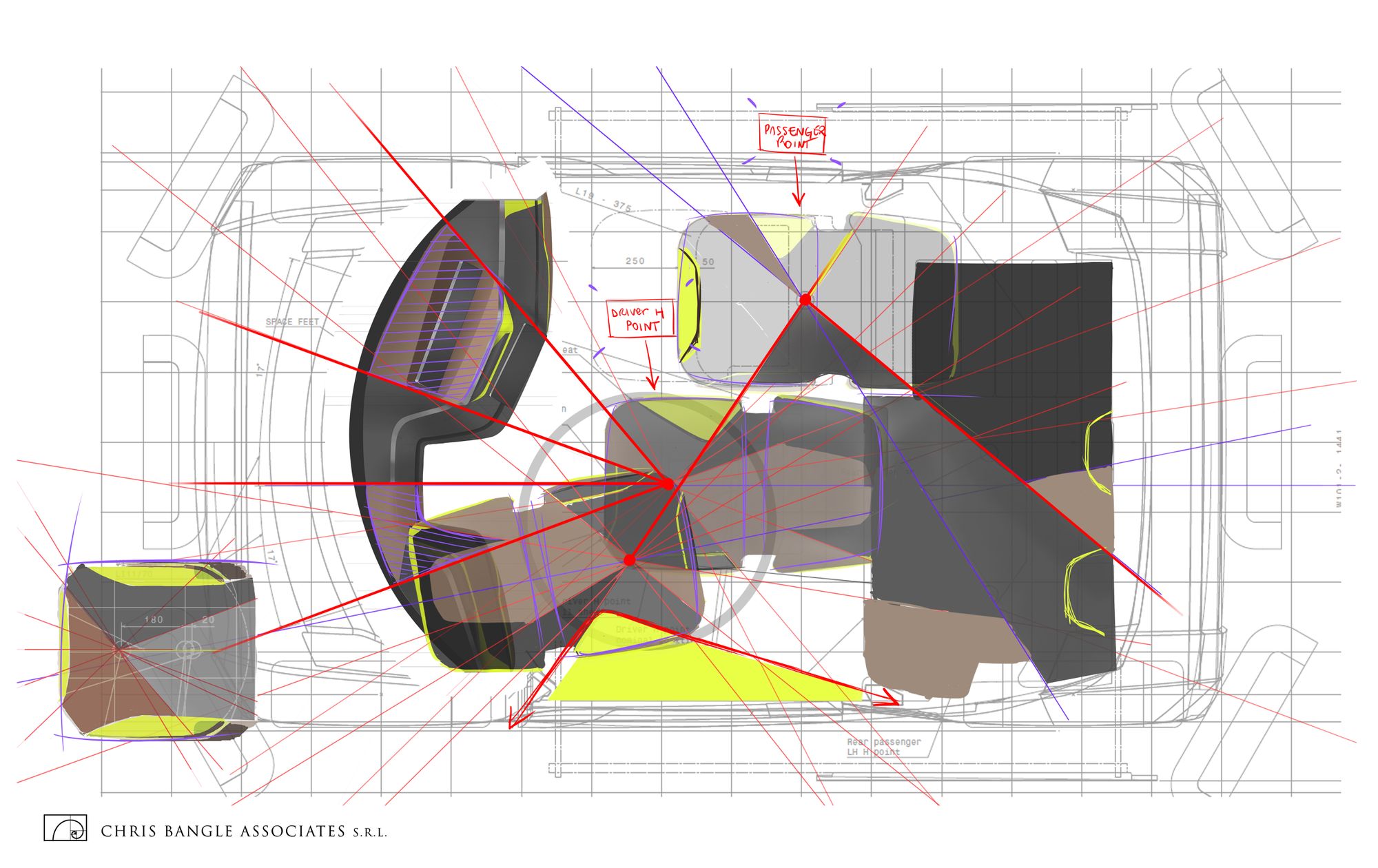

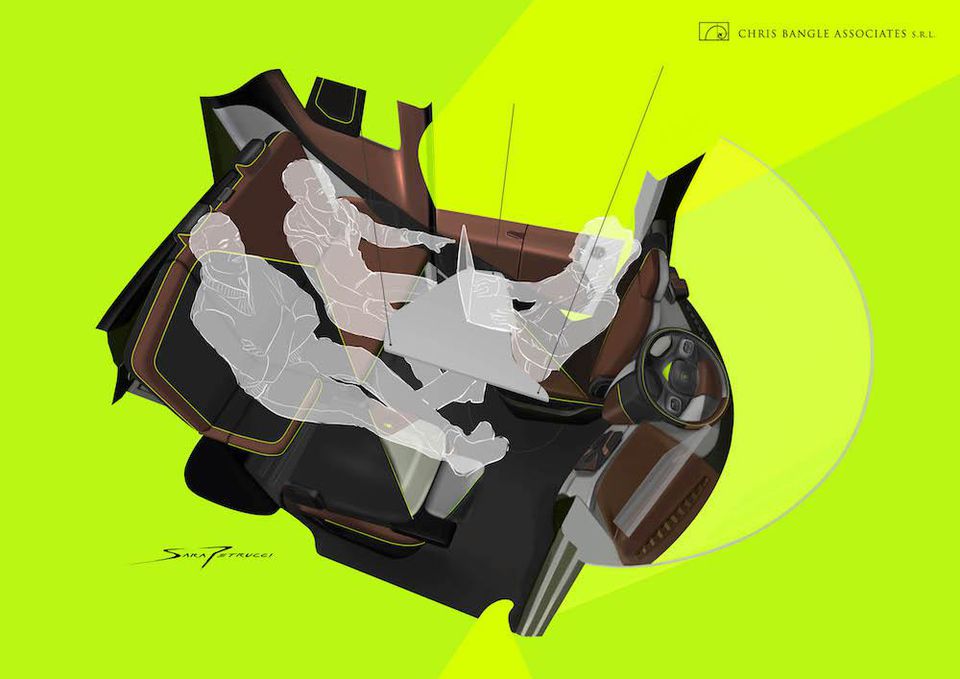
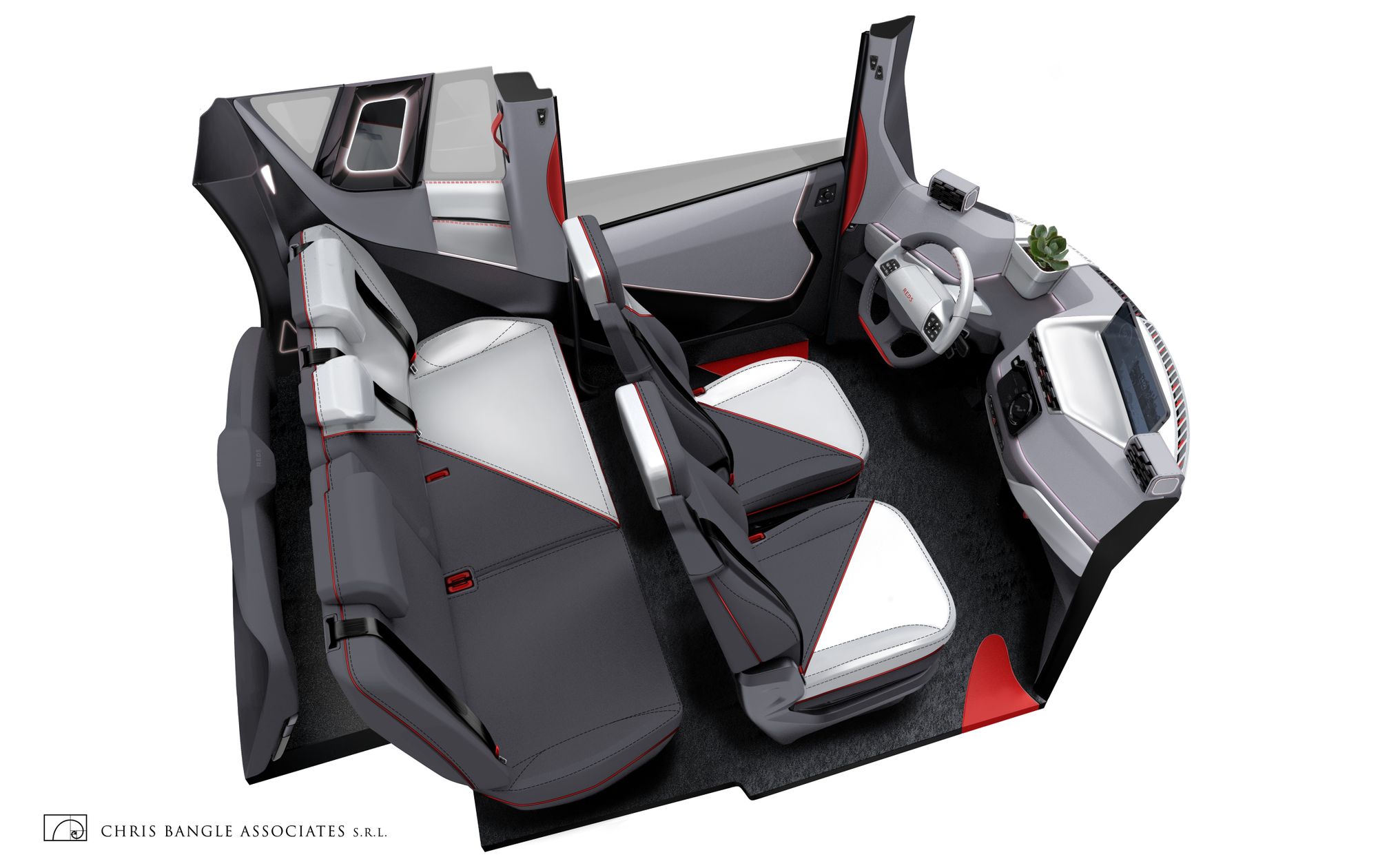

Designs for the REDS project. Source: Chris Bangle Associates
Turning to performance cars, there’s a growing cynicism for hypercars and purely performance led vehicles at the moment. What do you think their designers will have to do in the future to make their cars appealing again?
I think in many ways they don't understand how to create a performance vehicle around anything other than a few phenomena like super jackrabbit acceleration or a 400 km/h top end. If that's what it is about, then some of the defining elements like aerodynamics are going to be there and unavoidable. But at the same time, maybe they don't have to be laid out like they always have been, and certainly the idea of active aerodynamics should be able to make these things a little bit less, let's say, predictable at the low end when they're under 120 km/h (which is when most people would see them). On the other hand, is that really what a supercar or a hypercar is all about? When I was younger, a supercar was something which was politically incorrect. If you looked at a Countach back in the 70s, this was a car where you just said: what the f*ck? You know it was a ‘what-the-f*ck’ kind of car. To me it’s a Gandini masterpiece, because he broke every possible rule in the book and gave us an icon. They even picked the right name - I don't know if you know this, but in Piemontese, where we live, the word ‘Countach’ actually kind of means ‘WTF’ - it's how they would say that. It's a very nice word for it.
Today these cars are not trying to be politically incorrect. They're not violating any rules like that, they're not going against nature. They have one foot in the beauty contest world - and nobody ever went to a beauty contest for innovation. That means you're already deciding you have to obey the standard canon, the standard tropes. We won't even go into the list of things that they could do to make them somehow give us more food for thought, make us see our world differently. When you see these cars you think of what Oscar Wilde said when he saw Niagara Falls for the first time: it would be more impressive if it flowed the other way...
That's a brilliant way of capturing it! Moving on from cars, you've got your own design house, Chris Bangle Associates. Can you tell us a bit about what you do now and your recent projects?
It’s a design consultancy which works not just on cars, but also on any type of products which are designed. We've done everything here from bottles to super yachts. We even worked on a spaceship interior, and all kinds of household appliances from telephones onwards. Recently however we have had clients in domestic appliances who have really gotten into our design approach here, called objectomy. Objectomy is actually getting into the mind of the object and considering it like a living thing. Once you do that you begin to ask yourself what does it want to do, what are its dreams, and things like that. How does it want to help you, if you listen to it?
That actually comes from car design, because car designers tend to talk to their cars as if they're living things. They ask them “how do you want to be dressed today?”. They consider a car able to reflect comfort with the lines you give it, just like a little kid is comfortable with the clothes its mom dresses it in or not. By taking that approach and applying it into many other fields, we were able to open up a lot of doors in our minds. When you show it to a customer, they see opportunities for their product and user scenarios that weren't there before. This is kind of a spill-off from the other side of the work we're doing, which is going into cartoons.

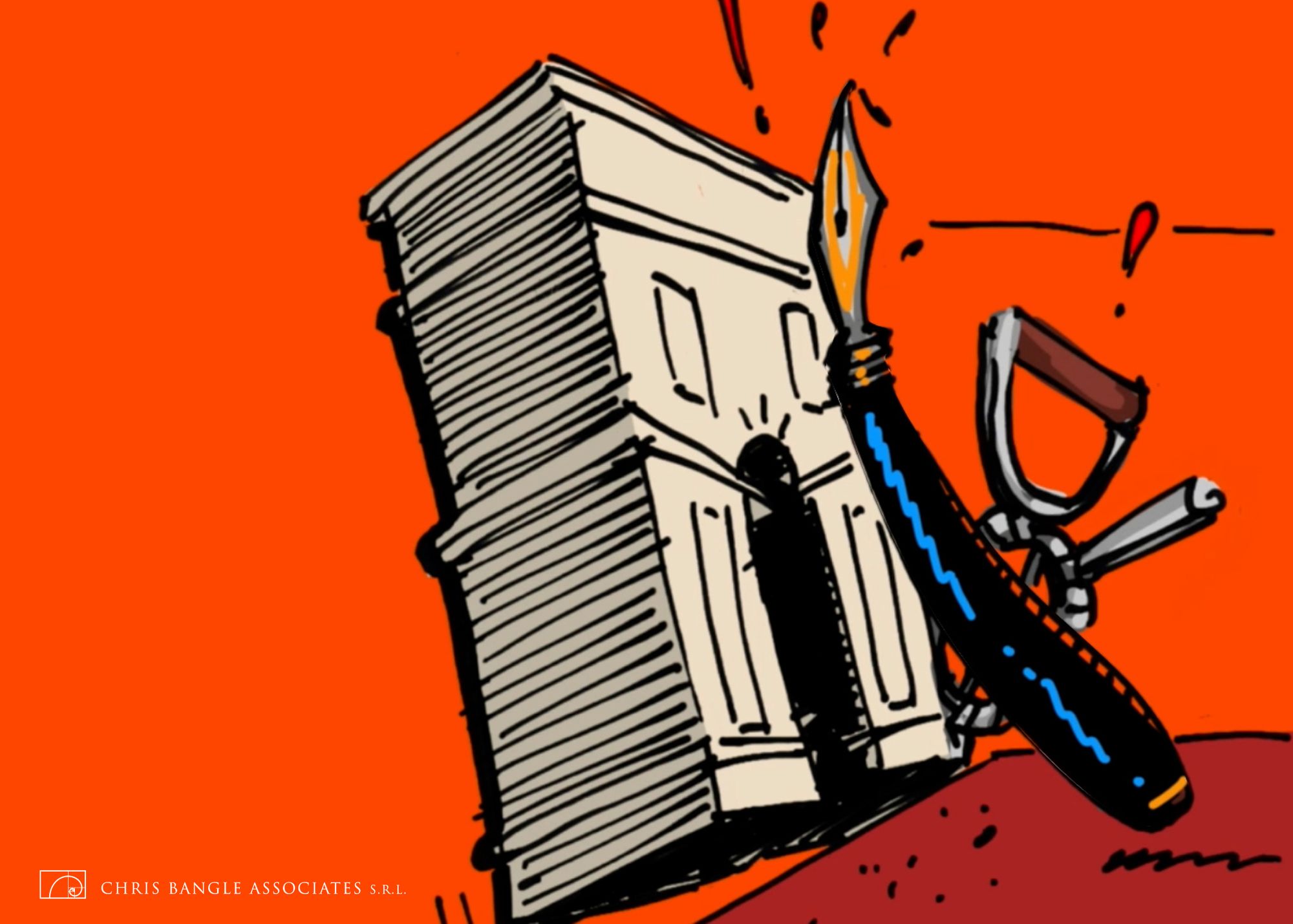

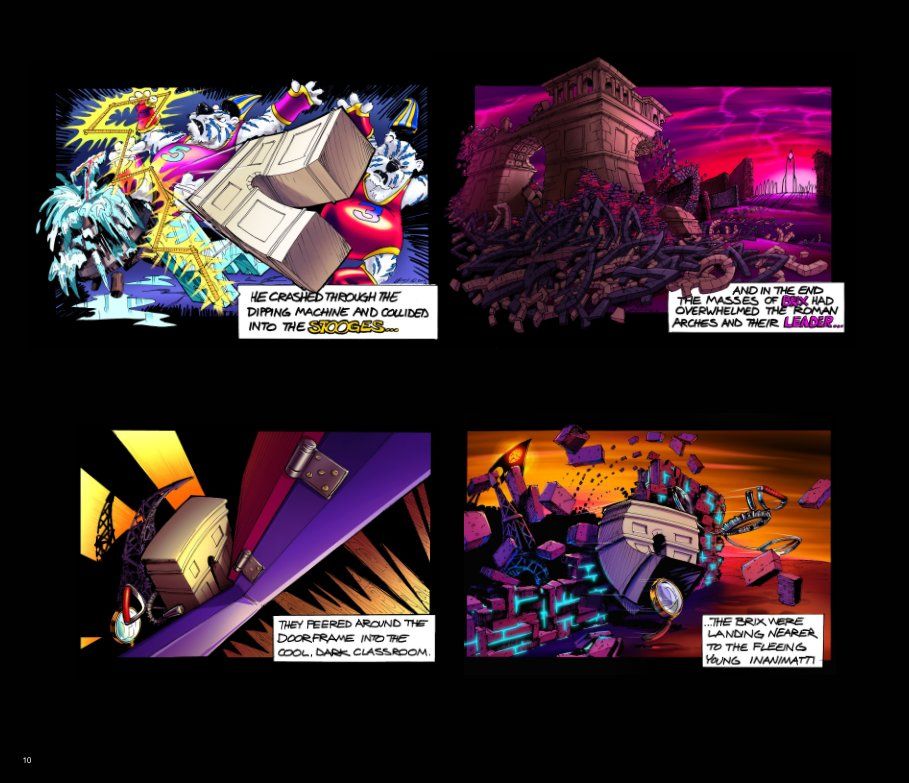
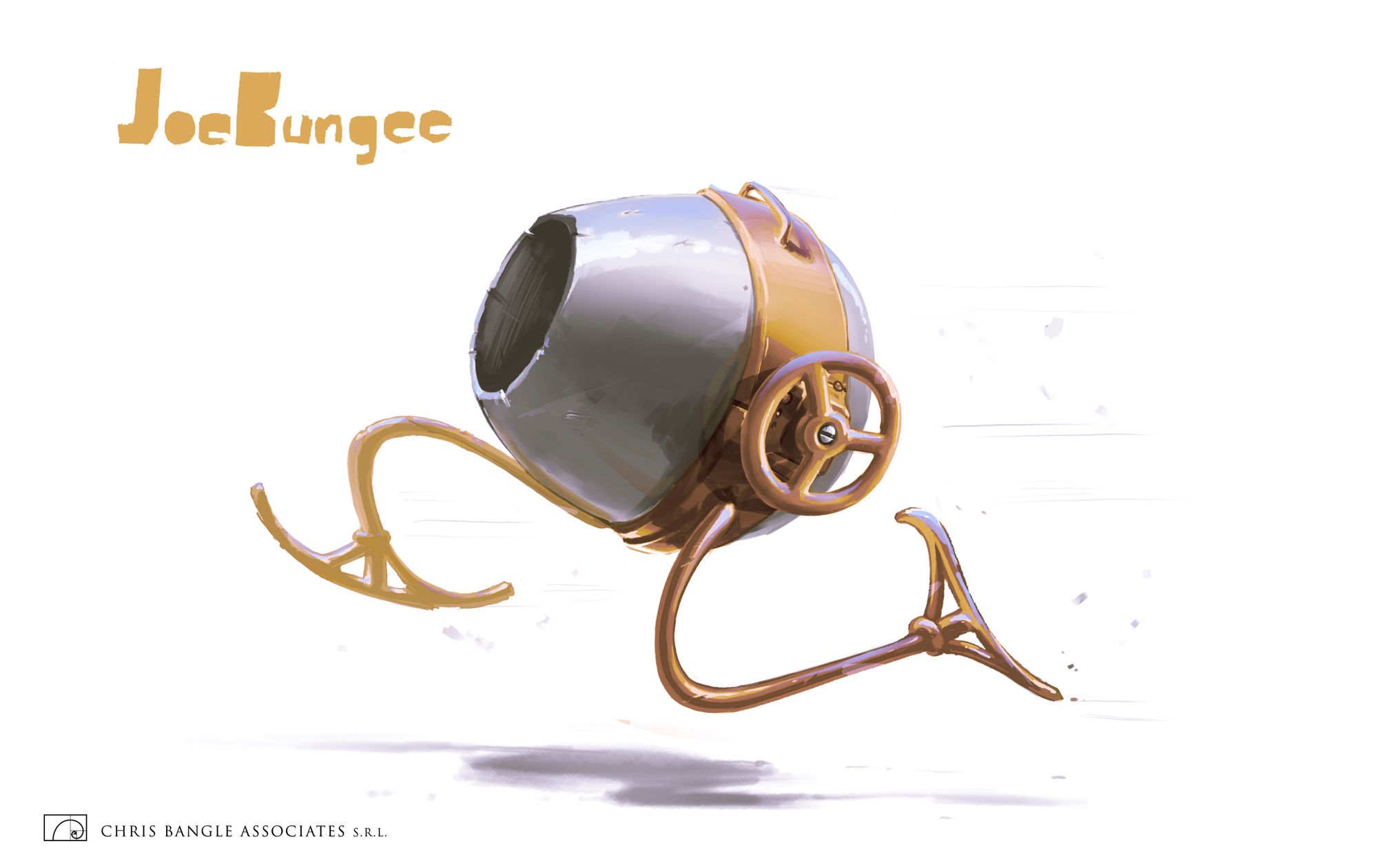
The creation process of the Inanimatti characters through the "Objectomy" design approach. Source & Credit: Chris Bangle
I didn't know about the cartoons - can you tell us a bit more about that?
That’s probably our best-kept secret! Outside our studio here is a very tall sculpture of a giant walking triumphal arch. You know, these triumphal arches like in Rome or in Paris. This one is huge, it's made of reinforced concrete, and he's taking a hike. On it is written in Latin, ‘every arch must earn its triumphs’. We made the sculpture after I brought back some drawings of walking architecture in Croatia, and as we were building it, we asked questions about it: who is he, what's his name, where is he going, who are his friends, and that led us to create a whole world of cartoon characters called the inanimatti, which are objects that are alive. We made a short film about it, a rock, paper, scissors fight. We also started our own little series of mini podcasts called the ‘unboxing’ series, where we tried to explain how to make your own inanimatti characters. All of this is leading towards taking Arky Arch, our character out there, and building him into a cartoon series for TV.
Produced by Inanimatti Productions. "SHEREA - THINKING OF" focuses on how cartoons can be strongly related to car design.
The actual animation short SHEARA, Chris Bangle Associates' first foray into animation.
UNBOXING THE INANIMATTI. The unboxing series provides the backstories and rules of the game for anyone wanting to join in the creative process of the Inanimatti stories and art-work. Source & Credit: Chris Bangle Associates
We're coming up on time, so I just had a few quick fire questions to end with. The first one goes back to cars: what is your favourite current car design on the market, and if you don't like any of them, what was your favourite legacy car design?
I like all cars, but I also don't like all cars. It's really unfair for me to say there's a particular car that I like or I don't like! I'm driving an old BMW X6, it's still first generation because I just can't emotionally part with it, I love the thing to death. I'm slowly getting my head around the idea of a new X6, but it's going to take me a little while. I enjoy the routes that companies like Citroën have taken with some of their products recently, as well as Peugeot. I really respect how the Volkswagen guys managed to take some process changes in their stamping and turn out some razor sharp sheet metal. Unfortunately they kind of overdid it, in that they applied it to absolutely everything, but they have to learn to dial it in and out too. It really shows you how a few process changes can give a really sharp new look to your company and your products.
I guess I'm still waiting for the car design to show us that it belongs to this century, and that it belongs to the new world we live in. It’s not a simple world, or a world of easy answers, but our cars are trying ever more and more to be palatable, less challenging, and things which you don't have to think about. That might explain why people don't really care about them either...
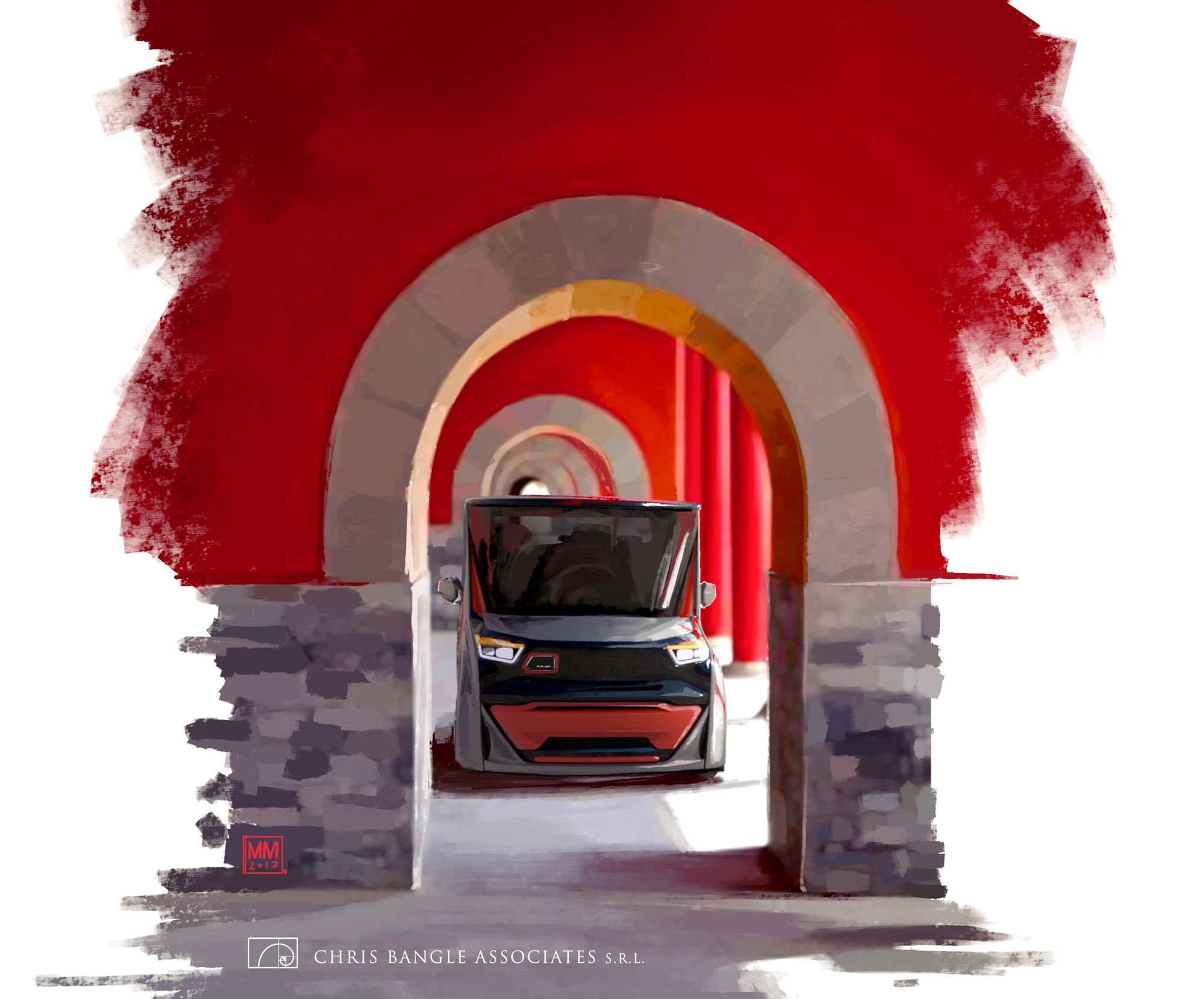
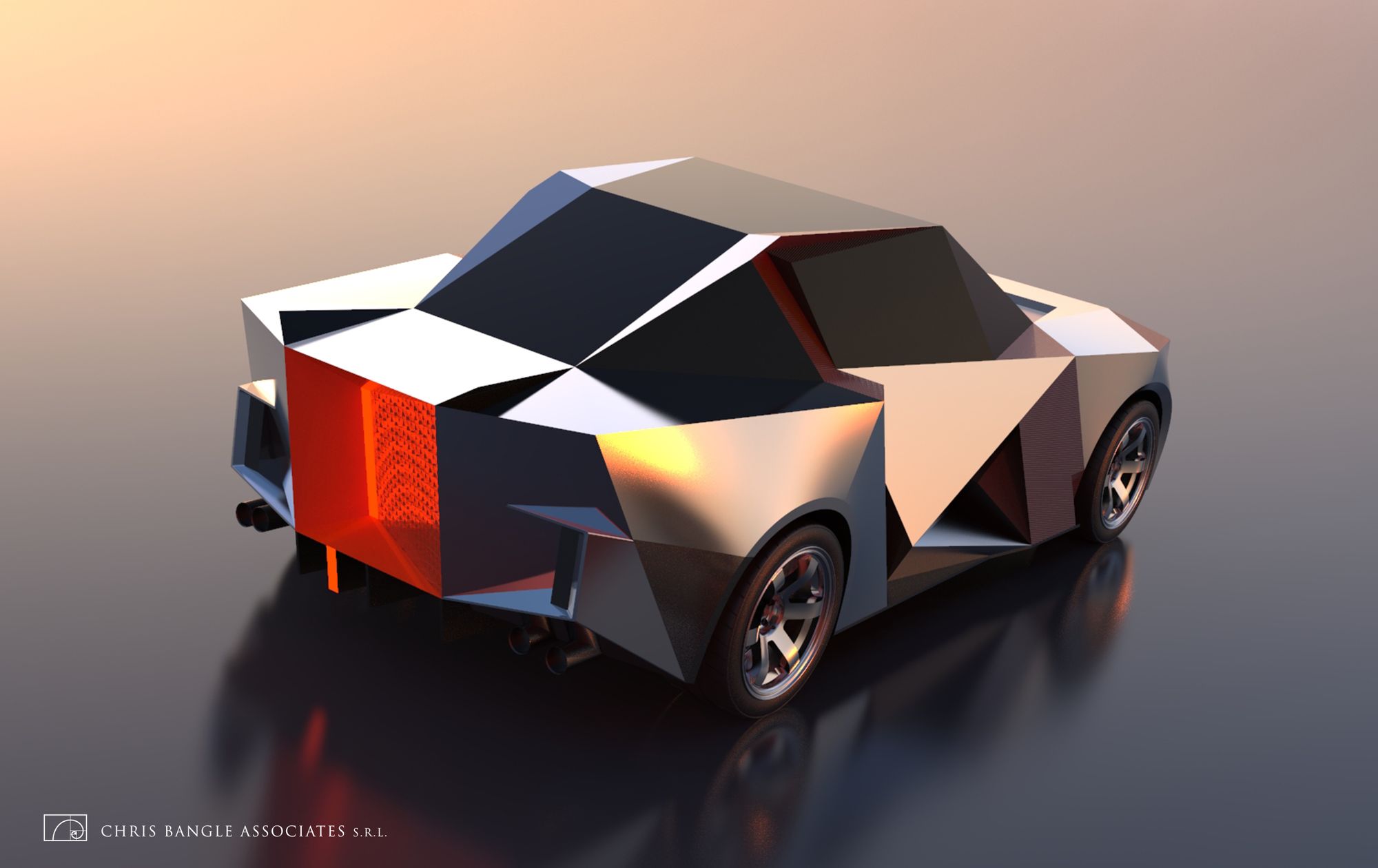
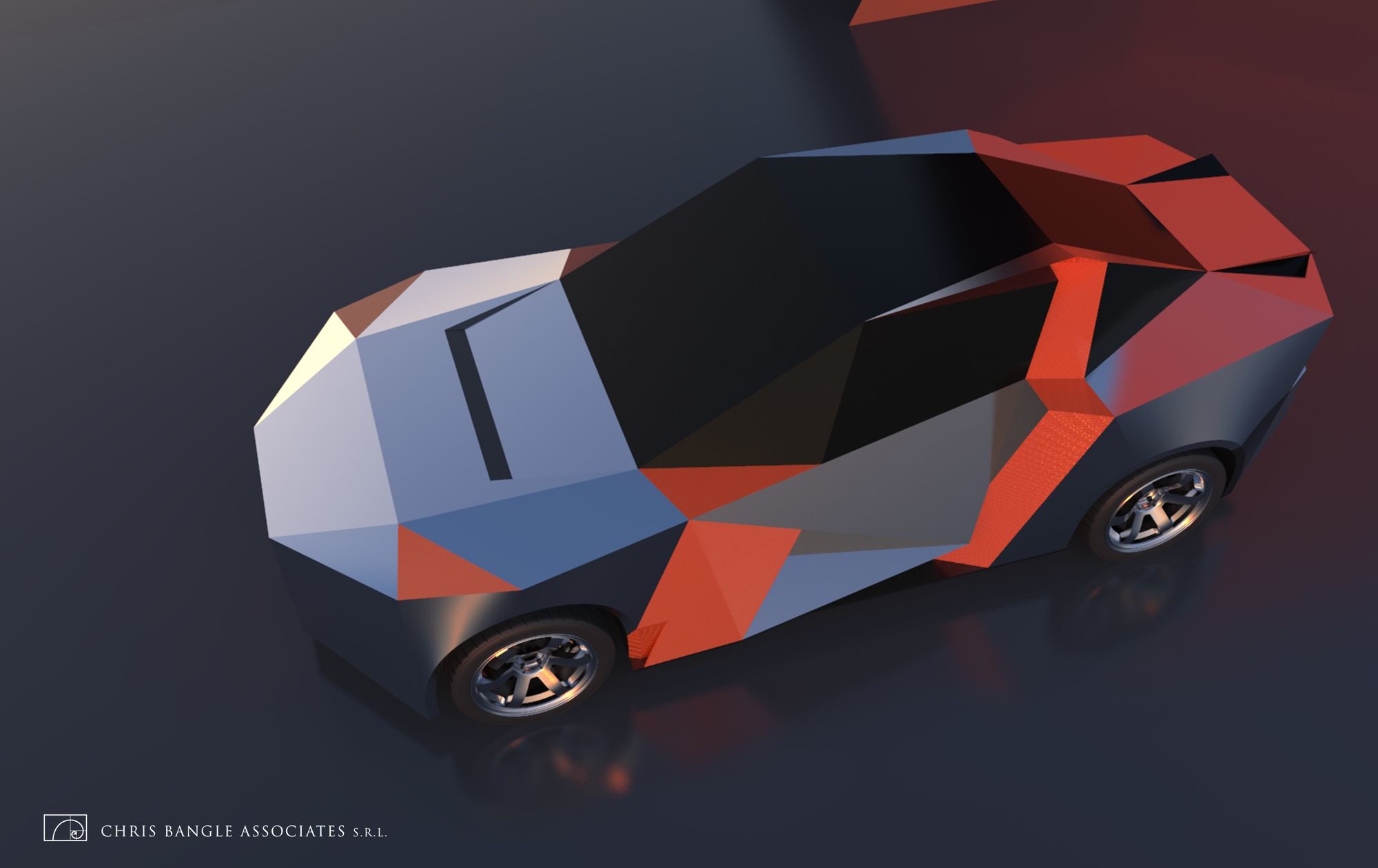
Renders of the REDS car project and another concept car. Source & Credit: Chris Bangle Associates
That's an interesting way of putting it. My second question is: what is the most important skill a good designer should have?
Of all the different skill sets that you would tell people to have, there's things like being critical, tenacious, things like that. I think one thing that I always look for in designers is whether you ask questions, or are you someone who just accepts things? Is there something going on in your mind? A culture is measured on the questions it asks - I believe in that very strongly - and it’s probably true to say that modern car designers don't ask enough questions.
Last question: if you could meet one figure from automotive or design history for dinner, who would it be and why?
I would give anything to have another dinner with Syd Mead, I'll tell you that. The guy was an endlessly entertaining gentleman, with endless energy, but I could say the same thing about other greats in design like Chuck Jordan who hired me out of ArtCenter and was truly a strong influence on my life as well as a fantastic guy. Or my first boss, Gordy Brown. There are too many figures like that that exist in the past.
You would love to know what it would be like to sit down next to a guy like Harley Earl and watch him at the dinner table. I wrote a book on car design once and I tried to channel Harley Earl when writing it, making him one of the characters. It wasn't very easy, but I had a lot of fun doing it!
Syd Mead & Chris Bangle interviewed on the future of design back in 2017. Source & Credit: Magna Exteriors.
On that cheerful note - thank you so much for your time today Chris, that was a really fascinating chat, and thanks very much for a great interview.
Thank you Hector, thank you very much!
To find out more about Chris Bangle and his work, you can visit his design studio's website at https://www.chrisbangleassociates.com/. The Inanimatti Productions Youtube Channel is https://www.youtube.com/channel/UCOMmBjZuMF-44QwS_YvaNwA.

